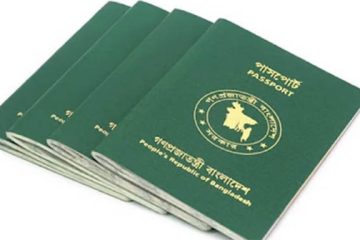The Asian Development Bank (ADB) will provide over USD 900 million in average annual assistance to Bangladesh under the development agenda of its Strategy 2020, which envisages inclusive economic growth, environmentally sustainable growth, and regional integration. The ADB will help the government address constraints to growth while promoting environmental sustainability, minimising disaster risks, and responding to climate change and disaster challenges. The ADB also said it will deepen its support for promoting inclusive growth by creating the conditions for sustained high growth with expanded economic opportunities, and broadened access to these opportunities.
To this end, the ADB will continue to support investment and reforms to boost energy efficiency and access to power, develop railway connectivity, enhance skills and quality of secondary education, and improve the urban environment, governance and services, including urban water supply and sanitation.
The ADB will also strengthen the support it provides to financial markets, develop climate-resilient rural connectivity, and foster integrated management of water resources, including flood control and mitigation of river bank erosion.
The ADB will continue to provide support to transport connectivity, cross-border energy trade, and trade facilitation to promote regional cooperation.
The ADB will step up its support to the process of fostering public-private partnerships by developing institutional capacity and improving the regulatory framework. Good governance and gender equity will be given priority.
Climate change and environmental development will be mainstreamed through ADB-assisted infrastructure projects. The ADB will also continue to promote private sector operations, including expansion of its trade finance programme.
As part of the assistance programme under the 2011-15 country partnership strategy (CPS), the overarching objective of the ADB’s support is to contribute to the government’s priorities of enhancing growth and reducing poverty under the Sixth Five Year Plan.
The ADB’s public sector operations focus on energy, transport, education, urban, finance, agriculture and natural resources. In the first two years (2011 and 2012) of the 2011-15 strategy period, over half of the total allocation was directed at the energy (power and gas) and transport sectors, and a fifth of the total allocation went to education. Under the financial sector, a capital market programme loan was provided, accounting for close to another fifth of the total allocation. Support was also extended to agriculture and urban water supply and sanitation.
In its publication “Bangladesh-ADB: 40 years of development partnership”, the ADB said: “Bangladesh has made impressive economic and social gains since its independence in 1971. High population pressures, a thin resource base, and rising incidence of natural disasters have posed major challenges to Bangladesh’s development. Reconstructing infrastructure, damaged extensively during the Liberation War, added to the challenges. The country successfully coped with these challenges and as a result, growth rates steadily moved upward.”
The ADB also said economic growth has also been largely inclusive and broad-based, with notable progress in poverty reduction. Food production kept pace with population growth. Population control programmes helped slow down population growth, per capita income rose significantly in real terms, and poverty fell sharply, coupled with improved life expectancy, higher literacy, and lower mortality.
The Manila-based lender said Bangladesh is on track to achieving most of the Millennium Development Goals. Child health and mortality indicators have improved, along with greater access to clean drinking water and sanitation. Gender disparity in primary and secondary education has been removed and fertility rates have sharply declined.
The government’s emphasis on female education and gender equality has led to women’s empowerment, increasing women’s economic and political roles. The priority attached to social protection programmes, improvements in disaster preparedness and crisis-coping capability, wider access to microfinance, and vibrant civil society organisations also contributed to improving social indicators.
Government policies have moved toward fostering greater market orientation, privatisation of major industrial enterprises, public enterprise reform, and adoption of a supportive incentive regime, the ADB said, adding: “As a result, the private sector progressively emerged as a key player and partner in the development process.”
According to the ADB, exports of readymade garments (currently close to four-fifths of total exports) rose steadily, responding to favourable policies and a conducive policy regime, and became a major contributor to growth and job creation, mostly for women. A vibrant entrepreneurial class also developed around the garments sector, which over time branched into other emerging sectors.
Overseas workers’ remittances (11.0 per cent of gross domestic product in FY 2012) became the other major growth driver, with a surge in the number of people leaving the country for jobs abroad. Remittances boosted domestic demand and have been instrumental in cutting poverty, the ADB noted.
A rise in investments, aided by healthy growth in national savings, expanded the economy’s productive capacity and supported higher economic growth (about 6.0 per cent on average in FY 2001 to FY 2012) and a faster decline in poverty, the ADP pointed out.
It also observed that in recent years, the country has shown remarkable resilience to external shocks, with a generally stable macroeconomic management.
-With The Independent input




















